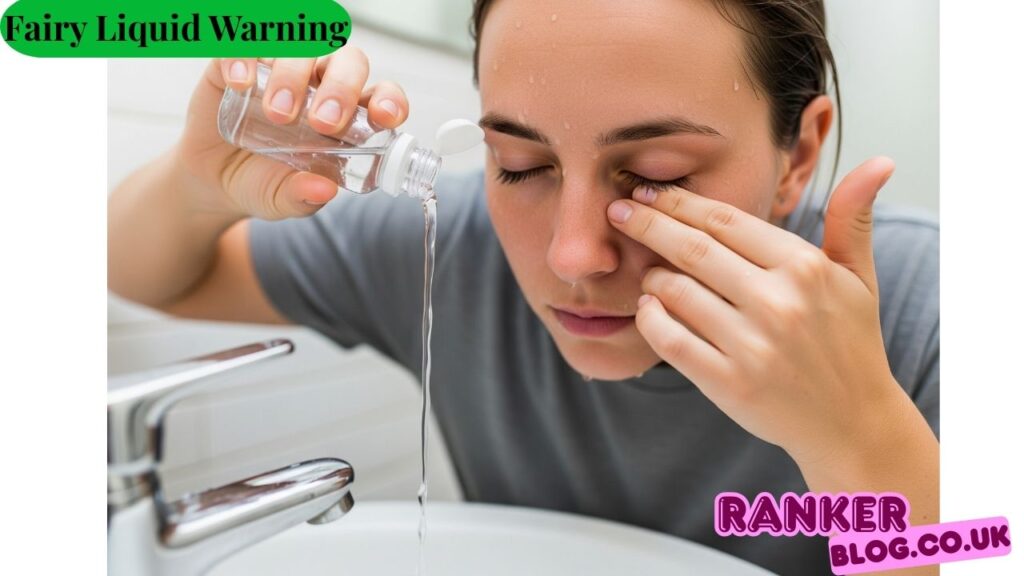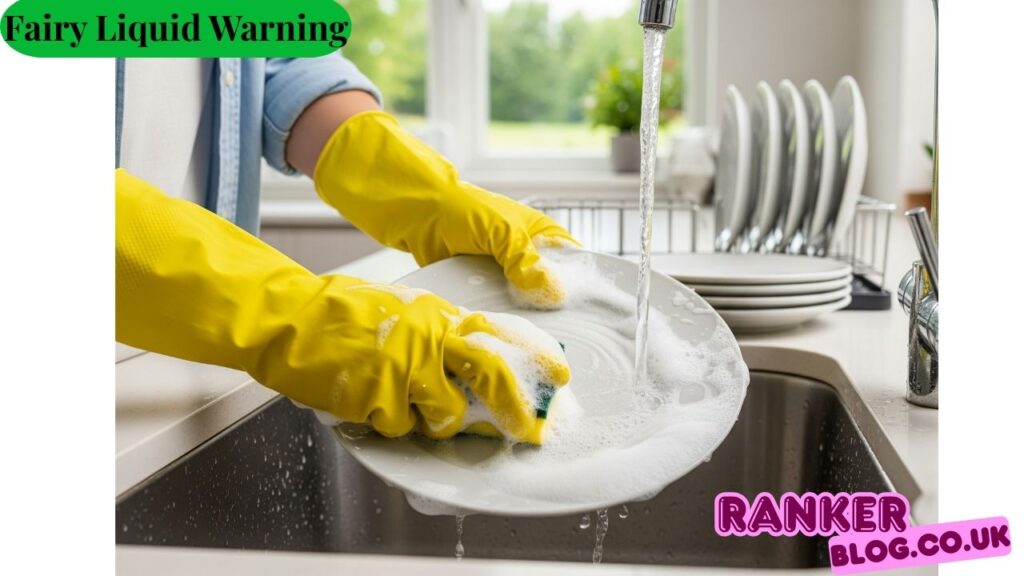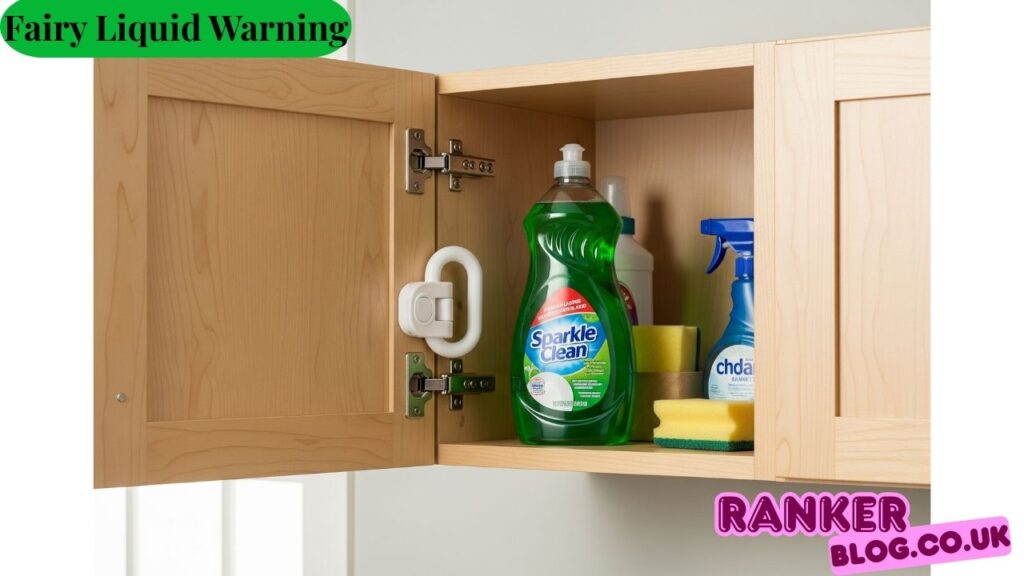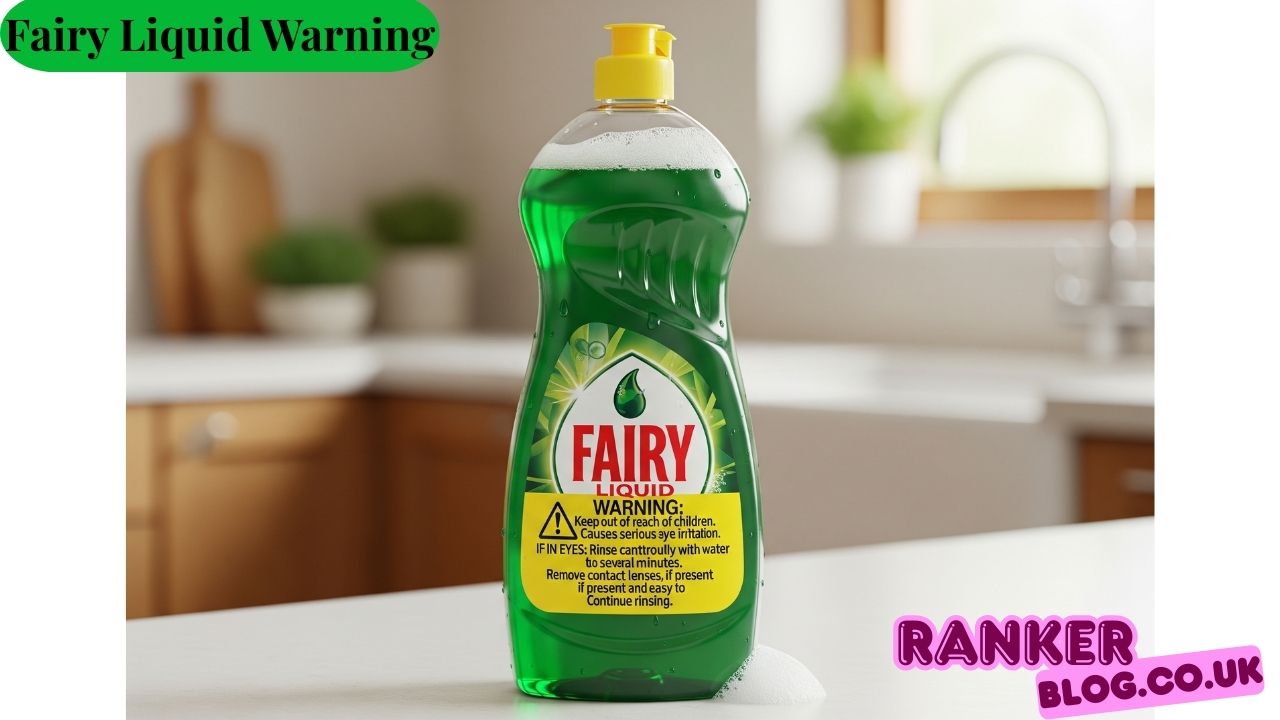Introduction
Every household relies on effective cleaning products, and Fairy Liquid stands as one of the most trusted dishwashing detergents available. This concentrated formula efficiently cuts through grease and grime, making dishwashing tasks more manageable for families worldwide. However, like all household cleaning products, understanding the Fairy Liquid warning information is crucial for maintaining a safe home environment.
The importance of proper handling and storage cannot be overstated when dealing with any cleaning product. Even common household items require careful attention to safety guidelines to prevent accidents and ensure the well-being of family members and pets. This comprehensive guide addresses the essential fairy washing-up liquid warning information that every user should understand.
Potential hazards associated with dishwashing liquids include skin and eye irritation, accidental ingestion risks, and environmental concerns. By following proper safety protocols and understanding warning labels, users can enjoy the cleaning benefits while minimizing any associated risks.
Product Safety Information
Active Ingredients and Their Effects
Fairy Liquid contains surfactants and other cleaning agents designed to break down grease and food residues effectively. These active ingredients, while safe when used correctly, can cause irritation if they come into direct contact with sensitive areas of the body. The formulation includes anionic and nonionic surfactants that work together to create the product’s cleaning power.
Understanding how these ingredients interact with skin and other surfaces helps users make informed decisions about protective measures during use. The concentrated nature of the formula means that even small amounts can be highly effective, but also requires careful handling to prevent overexposure.
Concentration Levels in Different Fairy Products
Different Fairy product variants contain varying concentration levels of active ingredients. Regular Fairy Liquid typically contains standard surfactant concentrations suitable for everyday dishwashing tasks. Ultra-concentrated versions contain higher levels of active ingredients, requiring smaller quantities per use but potentially increasing exposure risks if not diluted properly.
Sensitive skin formulations often contain milder surfactants and additional moisturizing agents to reduce the likelihood of skin irritation. Users should always check product labels to understand the specific concentration levels in their chosen variant.
Age Restrictions and Vulnerable Populations
Children under 12 years should not handle concentrated dishwashing liquids without adult supervision. Elderly individuals with compromised immune systems or sensitive skin conditions may experience heightened reactions to cleaning product ingredients.
Pregnant and nursing mothers should take additional precautions when using any cleaning products, ensuring adequate ventilation and minimizing direct skin contact through the use of protective gloves.
Common Warning Categories
Eye Contact Warnings
Immediate Irritation Risks
Direct eye contact with Fairy Liquid can cause immediate stinging, burning, and temporary vision impairment. The surfactants in the formula can disrupt the natural tear film, leading to discomfort and potential corneal irritation. Users should exercise extreme caution to prevent splashing during use.
Flushing Procedures
In case of accidental eye contact, immediately flush the affected eye with clean, lukewarm water for at least 15 minutes. Hold the eyelid open to ensure thorough rinsing of the entire eye surface. Remove contact lenses if present and easily removable. Avoid rubbing the eye, as this can worsen irritation and potentially cause additional damage.
When to Seek Medical Attention

Seek immediate medical attention if eye irritation persists after thorough flushing, if vision becomes blurred or impaired, or if severe pain develops. Additionally, consult a healthcare provider if redness and swelling do not improve within 24 hours of the initial exposure.
Skin Contact Precautions
Sensitivity and Allergic Reactions
Some individuals may develop contact dermatitis or allergic reactions when exposed to dishwashing liquid ingredients. Symptoms can include redness, itching, swelling, or the development of a rash in the contact area. Those with known sensitivities to surfactants or fragrances should exercise particular caution.
Prolonged Exposure Effects
Extended skin contact with concentrated dishwashing liquid can lead to drying, cracking, and irritation. The surfactants can strip natural oils from the skin, compromising the skin’s protective barrier and potentially leading to dermatitis or other skin conditions.
Protective Measures for Frequent Use
Regular users should wear rubber or nitrile gloves to create a barrier between their skin and the product. Choose gloves that fit properly to maintain dexterity while providing adequate protection. After use, thoroughly wash your hands with mild soap and apply moisturizer to restore skin hydration.
Ingestion Hazards

Accidental Consumption Symptoms
Accidental ingestion of Fairy Liquid can cause nausea, vomiting, diarrhea, and stomach irritation. The surfactants can cause foaming in the digestive system, potentially leading to discomfort and digestive upset. Large quantities may cause more severe symptoms requiring immediate medical intervention.
First Aid Procedures
If accidental ingestion occurs, do not induce vomiting unless specifically instructed by a medical professional. Rinse the mouth thoroughly with water and encourage the person to drink small sips of water or milk to dilute the product. Monitor for symptoms and seek medical advice promptly.
Poison Control Contact Information
Keep poison control center contact information readily available in your home. In the United States, contact the Poison Control Center at 1-800-222-1222. In the UK, contact NHS 111 for guidance. Always have product packaging available when contacting emergency services to provide accurate ingredient information.
Household Safety Measures
Proper Storage Locations
Store Fairy Liquid in its original container in a cool, dry place away from direct sunlight and heat sources. Keep products in locked cabinets or high shelves inaccessible to children and pets. Avoid storing cleaning products near food items or in areas where cross-contamination might occur.
Container Labeling and Identification

Never transfer dishwashing liquid to unmarked containers or food containers. Maintain original labeling to ensure proper identification and access to safety information. If containers become damaged, transfer the product to a clearly labeled container with all relevant safety information.
Mixing Warnings
Never mix Fairy Liquid with other cleaning products, especially those containing bleach or ammonia. Chemical reactions between different cleaning agents can produce toxic gases or reduce the effectiveness of both products. Use one product at a time and allow surfaces to dry completely before applying different cleaning agents.
Usage Precautions
Proper Dilution Ratios
Follow manufacturer guidelines for dilution ratios to ensure effective cleaning while minimizing exposure risks. Typically, a small amount of Fairy Liquid mixed with warm water creates a sufficient cleaning solution for most dishwashing tasks. Using excessive amounts does not improve cleaning effectiveness but increases exposure risks.
Ventilation Requirements
Ensure adequate ventilation when using concentrated dishwashing liquids, especially in enclosed spaces. Open windows or use exhaust fans to maintain air circulation and prevent the buildup of vapors. Good ventilation also helps reduce the concentration of any airborne particles that might cause respiratory irritation.
Personal Protective Equipment Recommendations
Wear protective gloves when handling concentrated products or when washing large quantities of dishes. Consider using aprons to protect clothing and prevent skin contact by absorbing fabric. Safety glasses may be appropriate when handling concentrated products or working in situations where splashing is likely.
Emergency Response
First Aid Procedures for Different Exposure Types
Maintain a well-stocked first aid kit and ensure all family members understand basic emergency procedures. For skin contact, immediately remove contaminated clothing and flush the affected area with water. For inhalation exposure, move to fresh air immediately and monitor breathing.
When to Contact Emergency Services
Contact emergency services if someone experiences difficulty breathing, severe allergic reactions, loss of consciousness, or persistent symptoms after exposure. Don’t hesitate to seek professional medical advice if you’re unsure about the severity of an exposure incident.
Poison Control Center Information
Program poison control numbers into your phone and post them in visible locations throughout your home. When calling, have the product container available to provide specific ingredient information and follow their guidance precisely.
Environmental Considerations
Disposal Guidelines
Dispose of empty Fairy Liquid containers according to local recycling guidelines. Never pour unused product down drains in large quantities, as this can overwhelm wastewater treatment systems and potentially harm aquatic ecosystems.
Impact on Septic Systems
Users with septic systems should be particularly mindful of the quantities of dishwashing liquid entering their wastewater system. Excessive amounts can disrupt the bacterial balance necessary for proper septic system function.
Aquatic Life Warnings
Surfactants in dishwashing liquids can be harmful to aquatic life if they enter waterways in concentrated amounts. Use products responsibly and avoid washing dishes directly in natural water sources during camping or outdoor activities.
Special Populations
Pregnancy and Nursing Considerations
Pregnant and nursing mothers should minimize direct contact with cleaning products by wearing gloves and ensuring adequate ventilation. While normal household use is generally considered safe, avoiding unnecessary exposure is a prudent precaution.
Children’s Exposure Prevention
Educate children about the dangers of cleaning products and establish clear rules about handling household chemicals. Use child-resistant locks on storage cabinets and regularly check that safety measures remain effective as children grow and develop new abilities.
Pet Safety Measures
Keep pets away from areas where dishwashing liquid is being used until surfaces are thoroughly rinsed and dried. Store products in locations inaccessible to pets, and be aware that some animals may be attracted to certain product fragrances.
Also Read: The Mike Wolfe Passion Project Transforming America’s Forgotten Historic Towns

